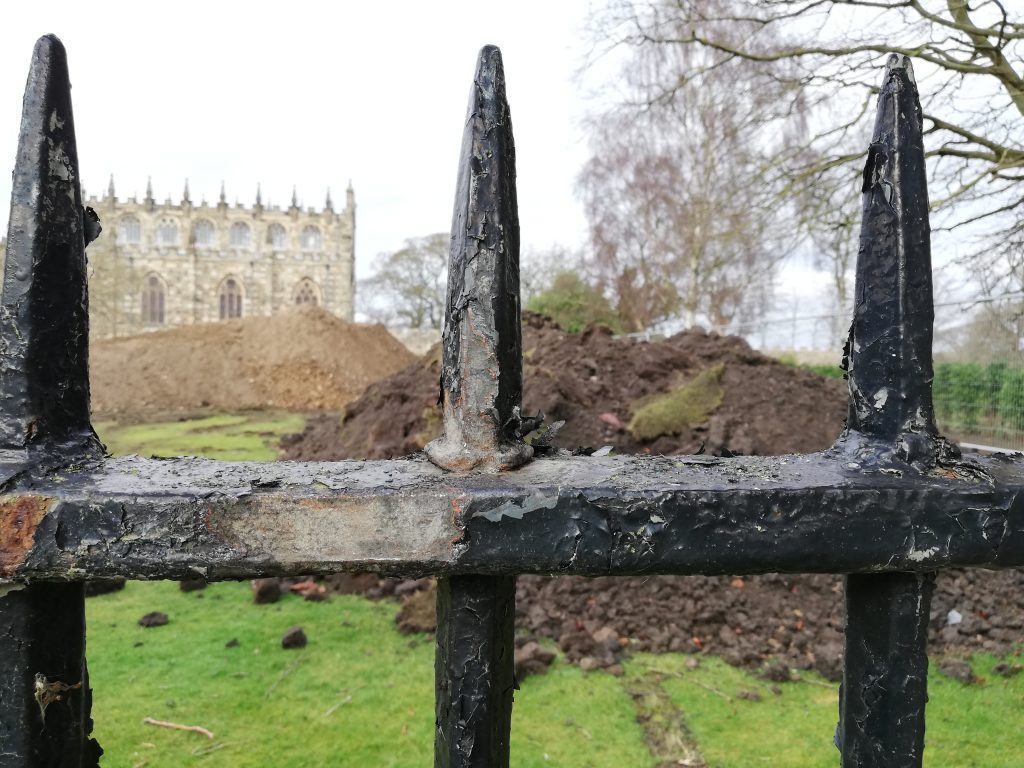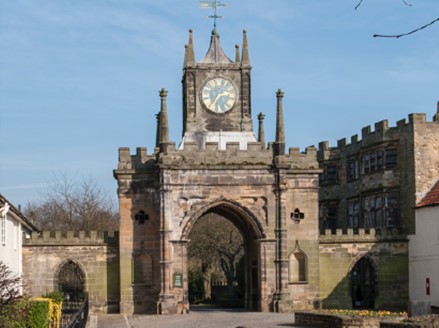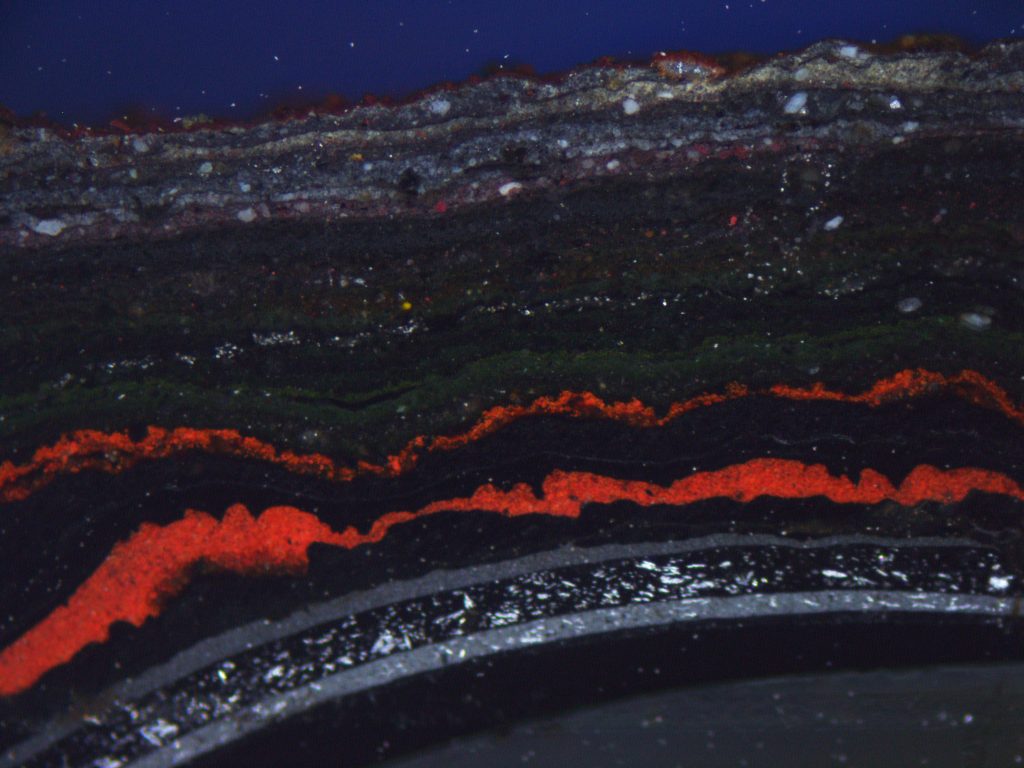Auckland Castle
Exterior Railings & Doors

Project Brief & Background
Research was commissioned to establish the decorative history of the external metal and joinery elements within 15 areas of the curtilage of Auckland Castle.
Auckland Castle has a rich and complex history. External doors and ironwork have been continually repaired and replaced. The earliest element under investigation is probably the door of the Castle Lodge. The lodge was built by Bishop Cosin in the late seventeenth century, possibly utilising elements salvaged from Hazelrigg’s house. The Gatehouse was built by Bishop Trevor c.1760. The Wyatt Screen dates from Bishop Barrington’s early 19th century refashioning of Auckland Castle.
The existing decorations all date from the post WWII period. Many of the existing decorations have been applied during the early 21st century.

Decorative History of Railings
A great deal of research has been carried out on finishes applied to external metal work. Up until the early 19th century metal work was most commonly painted in grey coloured oil paint – generally described as ‘iron colour’ ‘lead colour’. This became the default colour for the protection and decoration of railings. Sometimes railings and gates were painted in a stone colour. The most expensive paint finishes applied during the seventeenth and eighteenth centuries were a blue paint containing the pigment smalt, or a green paint containing the pigment copper resinate. These were expensive materials and could only be afforded by the very wealthy. Gold leaf was applied to metal work but again its use was restricted to the houses of the wealthy.
After the invention of Chrome Yellow in the early 19th century green coloured paint (Chrome Yellow mixed with Prussian blue) became a much cheaper decorative option and green became the most popular colour for the decoration of external ironwork. A preference for increasingly darker green and green/blacks developed throughout the later 19th and 20th centuries. The development of fast drying acrylic resin paints after WWII during the 1960s heralded the almost ubiquitous use of black gloss on railings.
Project constraints
It should be noted that exterior architectural elements and all applied protective and decorative finishes are subject to the weather. Ironwork rusts and wood rots and the applied finishes and paint layers are lost.
The other factor which results in the loss of applied finishes is paint stripping carried out by housepainters. Although this is good house-painting practice carried out to remove the build-up of paint layers which may be obscuring decorative detailing and remove flaking and detached paint to ensure a good bondable surface for new decorative schemes, from an archaeological point of view the practice destroys important evidence. Applied finishes and paint layers which have survived for centuries may be removed in a matter of minutes by a zealous paint stripper.

Conclusions
The findings of the investigation of selected elements were collated on a Period Chart. The research established the decorations applied to external metal railings and doors during the building campaigns of Bishop Cosin, Bishop Trevor and Bishop Barrington.
The key findings are:
Bishop Cosin
- The Front Door of Castle Lodge was originally painted in a distinctive 17th Century Dark Brown/Grained decoration
Bishop Trevor
- The central Gates of the Gatehouse were decorated in a Light Stone coloured oil paint while the side gates and internal doors were painted in a Dark Grey oil paint.
- Some joinery elements were painted White during the late 18th century.
- The clock faces of Trevor’s Gatehouse were originally decorated in Black with Gold Leaf numerals. The existing Blue was probably introduced during the 20th century. The numerals were always picked out in Gold Leaf.
Bishop Barrington
- The Wyatt Screen was originally painted in a Light Grey oil paint.
- Wood graining was applied to the existing or newly fitted external doors
Later Decorative Trends
- Green paint tended to replace grey on railings and graining on external Doors during the 19th century and was applied until pre-WWII.
- Post WWII renovations involved extensive paint stripping.
- Post WWII decorations were carried out using Modern Alkyd Resin paints in Black, Green and Blue coloured paints.
